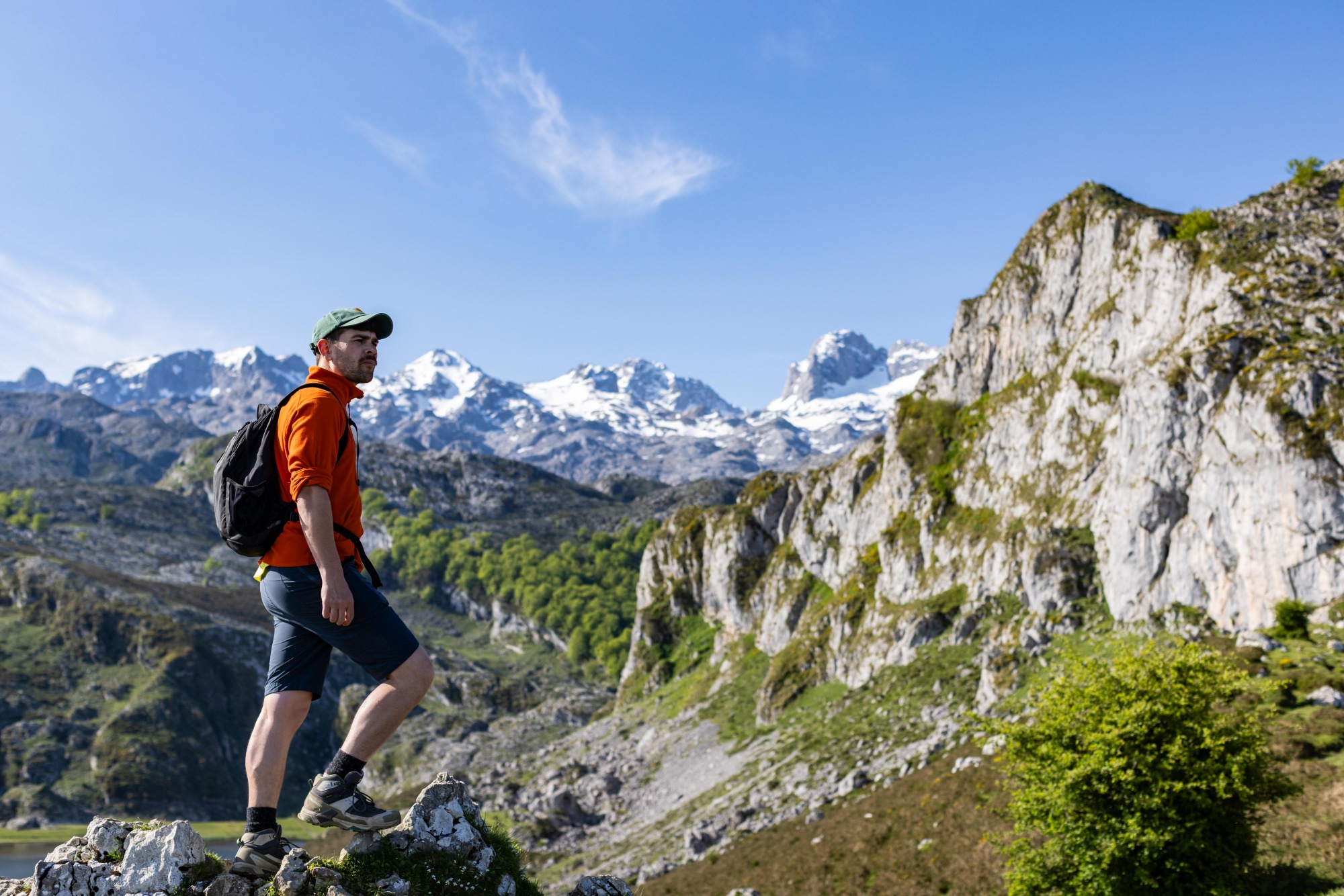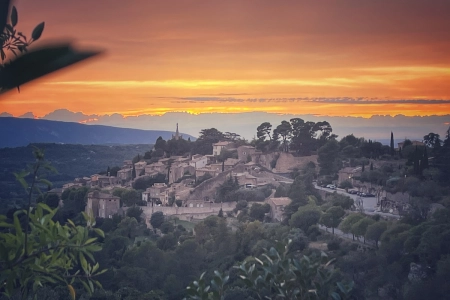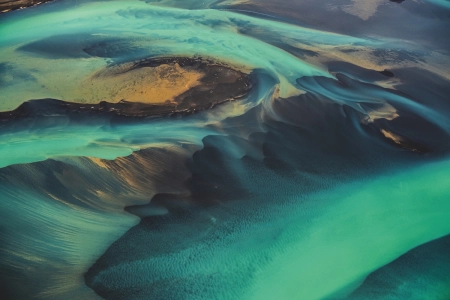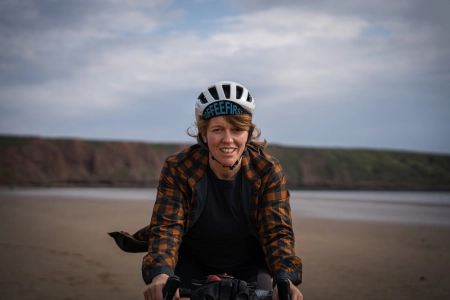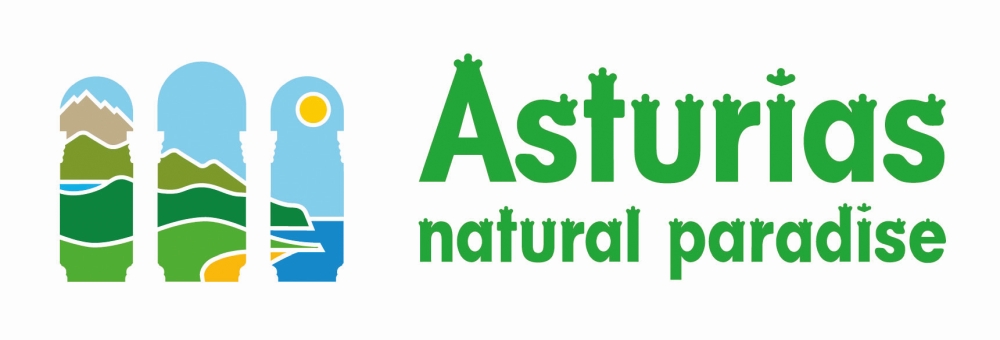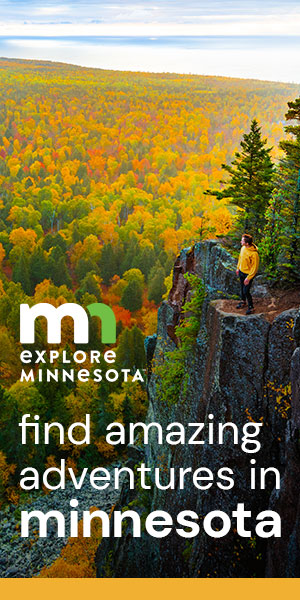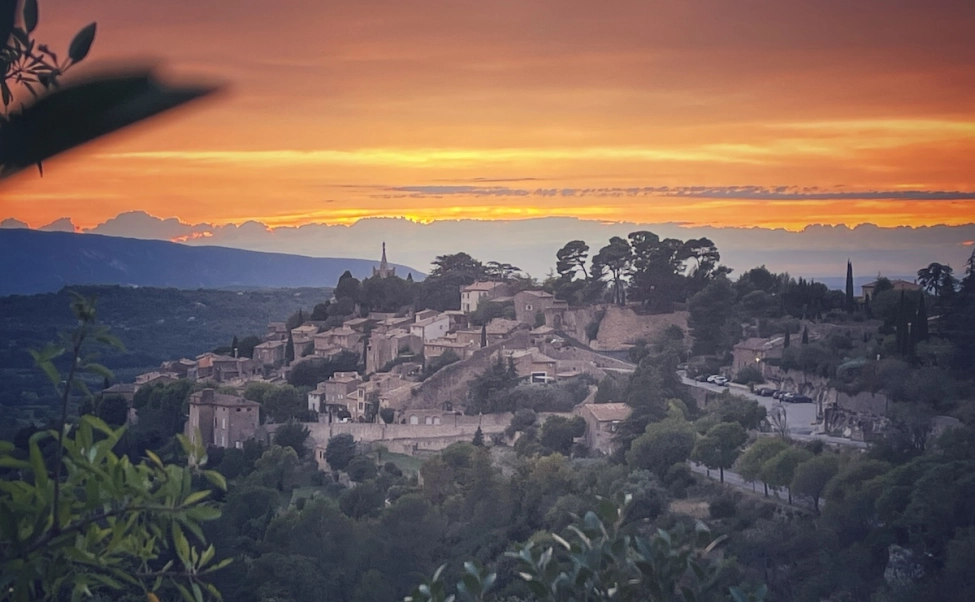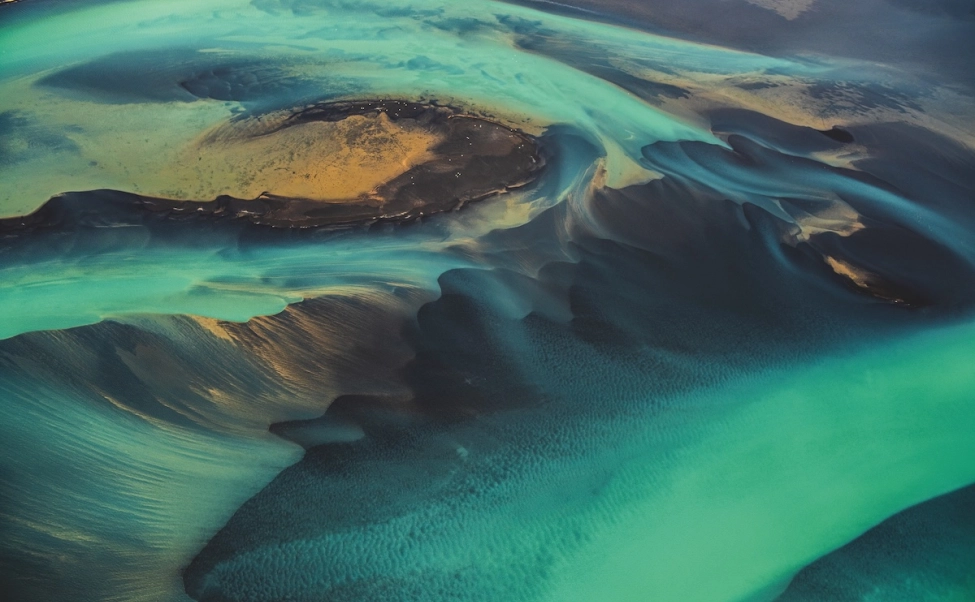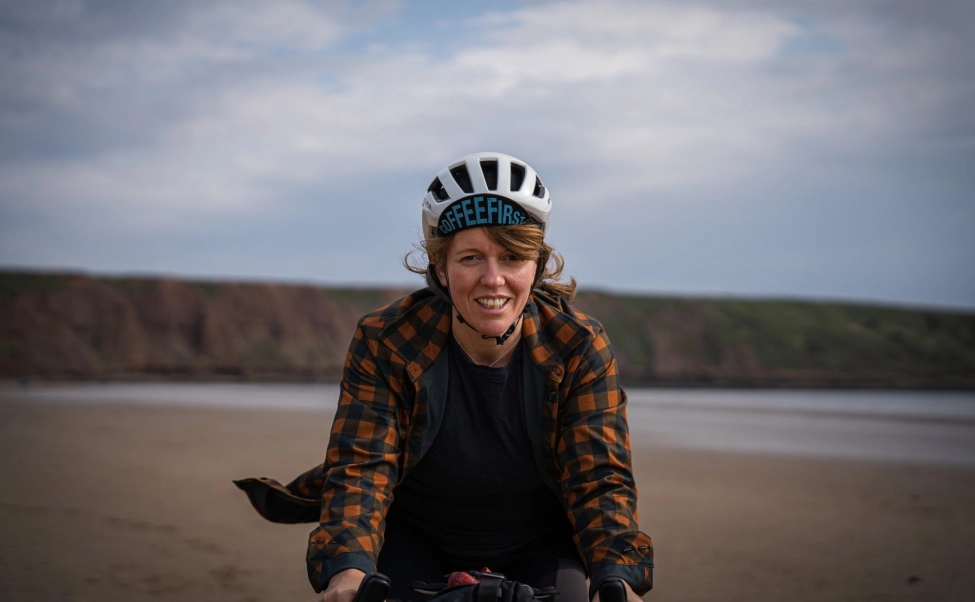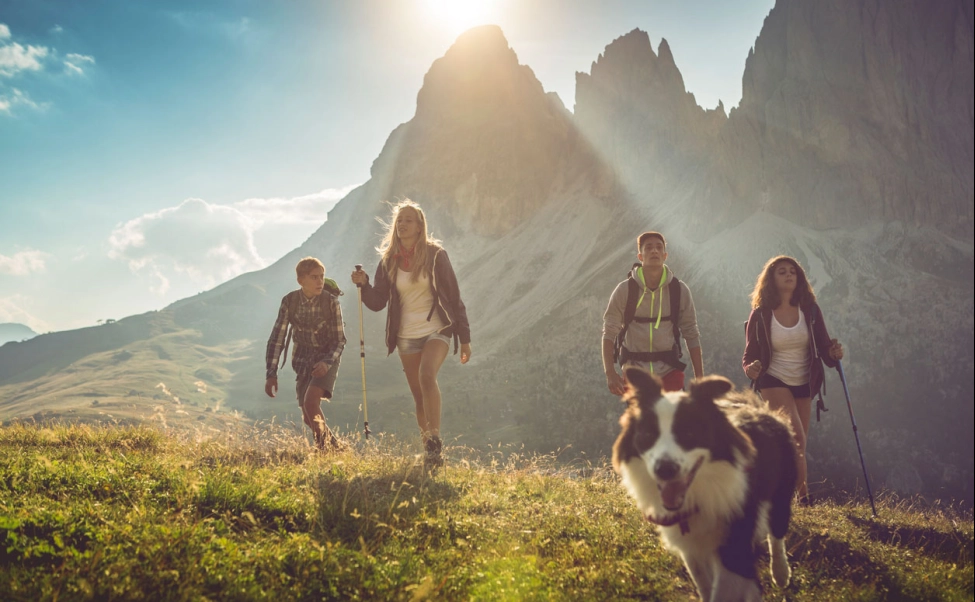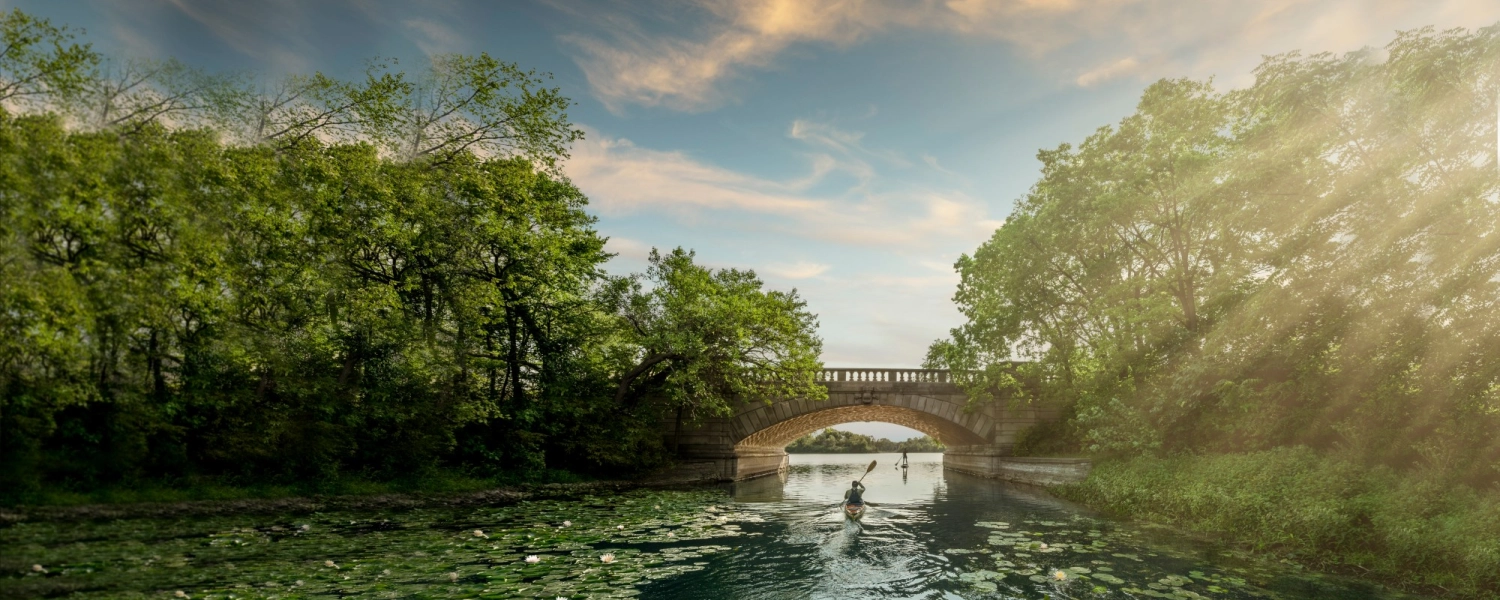- Details
- Written by: Stuart Kenny
The Picos formed 65 million years ago, when the Iberian and Eurasian tectonic plates collided, thrusting rocks from the seabed up thousands of metres. Look closely and you can still see fossilised clams and coral embedded in the stone here, even up above 2,000 metres. Glaciation and erosion later shaped these mountains, creating the distinctive serrated ridgelines of the Picos which backdrop quiet, cobblestoned towns, and tower over the deep valleys beyond.
This is a landscape where humans have long co-existed with nature, evidence of which can be seen in the abundant karst caves dotted around Asturias. Some of these caves are home to paintings of bears, bison, horses and deer dating back more than 30,000 years old.
As we hike amongst this limestone landscape, whole groups of griffon vultures and even the odd golden eagle circles above the most inaccessible of the high peaks above us, and we pass old wolf tracks in the mud as we walk along the dusty tracks. This place feels old.
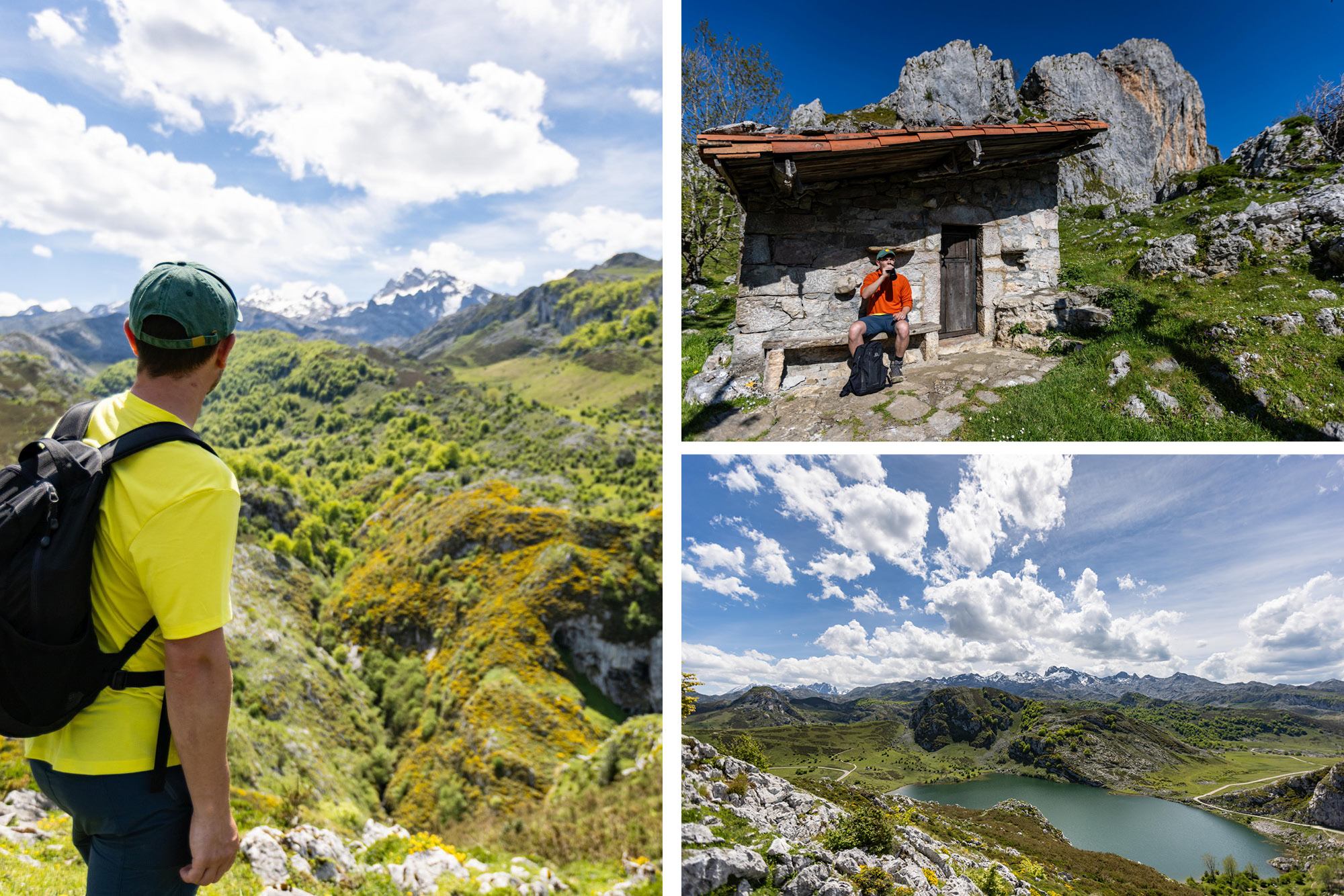
Orchids and primroses provide a purple and yellow pop of colour as you hike through the upper reaches of the range in Spring. Look into the distance and you’ll see rolling greenery; a mosaic landscape of deciduous forest, rolling up until the rock gets too steep and the domain of climbers takes over; formidable walls stretching up to peaks which hold snow year round.
This is not, as is often said of such places, an ‘untouched’ landscape. It is the distinctive human culture which has grown in and around the land of Asturias which gives the region its heart.
Farm-to-table food is a way of life here, and the locals are creative with their methods. If people know one thing about Asturias, it is often about the sidra - local cider poured from a height by experts into the glass, or about the cheese matured for months in secret caves before serving.
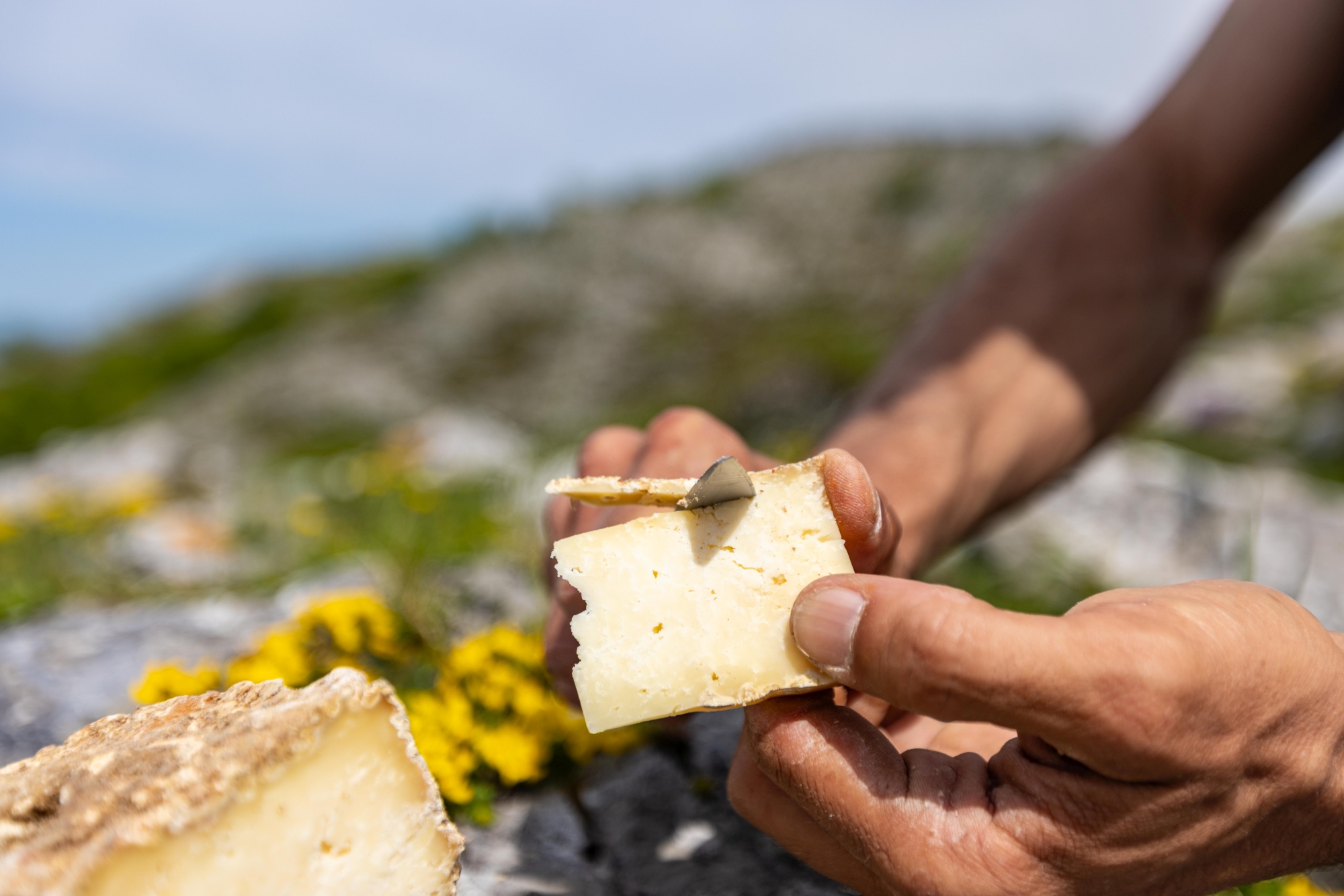
Hamlets of small, stone mountain huts are often to be found in the remote grasslands and valleys of the Picos, with rocks popped on their red-tile roofs to protect them from gusts of wind, rain or snowfall. Sometimes when you pass one of these huts (often on a walking trail far from the beaten path), you’ll see a local producer sitting outside, selling their homemade cheese.
Shepherds are a common sight in the mountains of Asturias. You pass them regularly as you hike the mountains, or you see their sheepdogs out protecting the flock. The sound of cowbells from the roaming mountain cattle is a constant soundtrack in the high valleys, but there are some places neither shepherds nor animals stray - narrow gorges or ridgelines left to hikers.
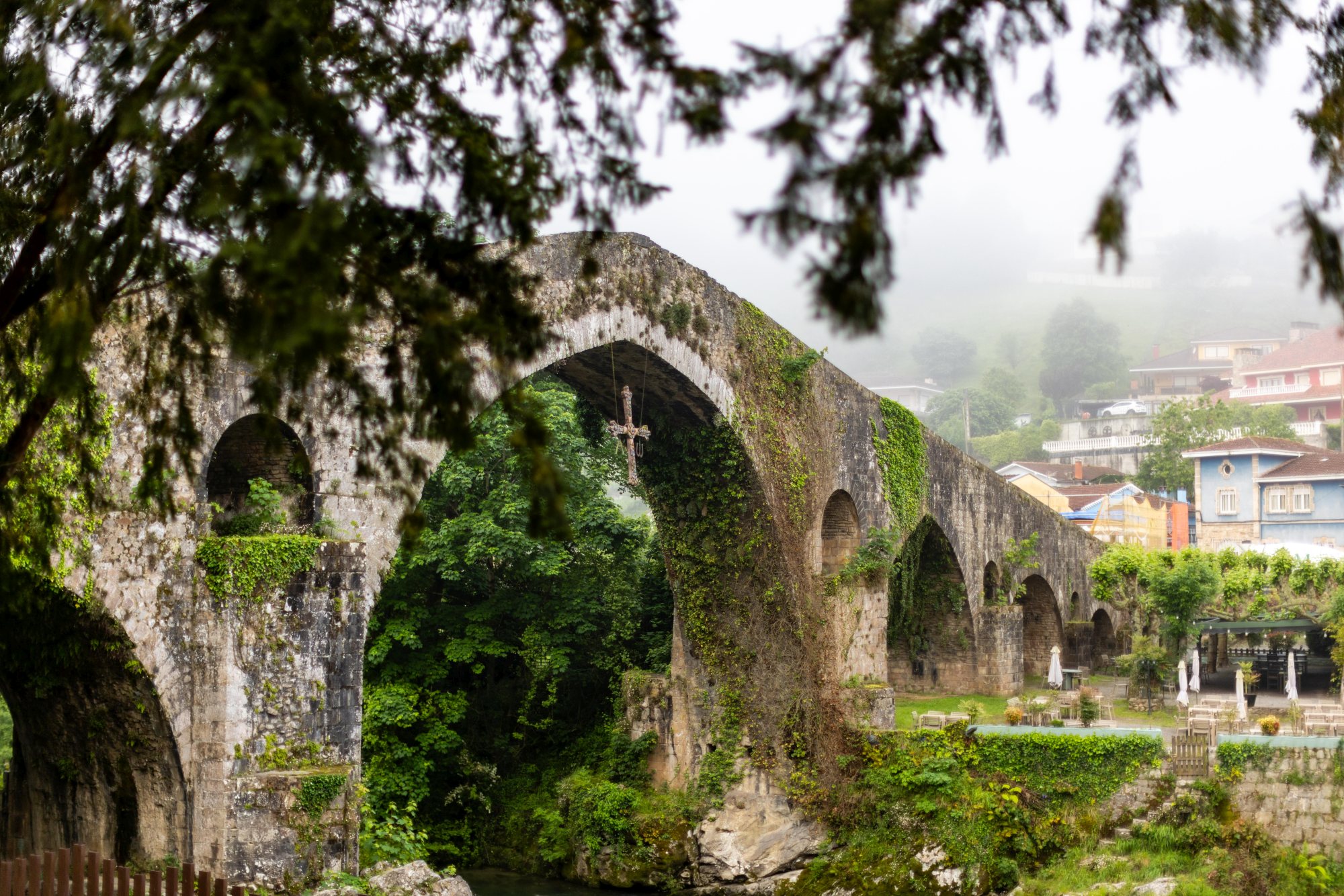
During our visit to Asturias, we stayed in the outdoor hub of Cangas de Onís, where a pointed medieval bridge crosses the Sella, a river known for its salmon fishing and canoeing. This town was the first ever capital of Asturias, a Kingdom born after a battle in nearby Covadonga in the 8th century, which would go down in history as the first battle of the centuries-long Reconquista.
To explore Asturias is to time travel through millions of years of history; to see how mountains are formed and how humans form amongst them. This is a place where culture is still connected intricately to the landscape around it, and for the adventurous minded, amongst lofty mountain peaks, along gushing rivers, on coastlines and gravel trails, your imagination is the only limit.
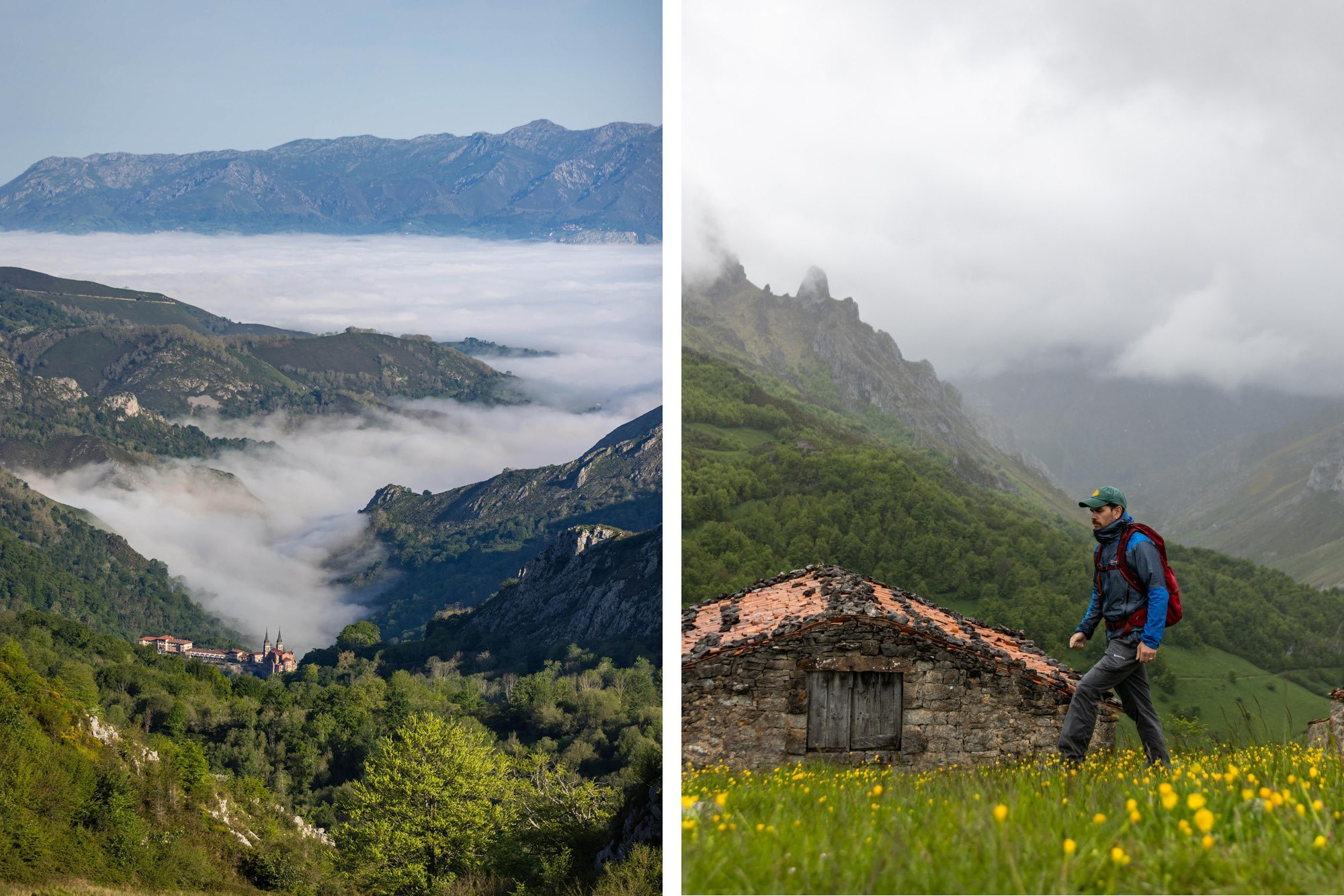
Lagos de Covadonga
When the Picos de Europa was first created in 1918, it was the first national park created in Spain, and it was centred around the Lagos de Covadonga - the site of two high glacial lakes. Visiting, it’s not hard to see why.
The road from the village of Covadonga up to the lagos is famous in its own right. It’s one of the great climbs of the Vuelta a España, 12.6km long and featuring La Huesera - an infamous 800m section with an average gradient of 15%, which cycling legends like Bernard Hinault and Greg LeMond have battled up in the past. Go early in the morning and you can often see a cloud inversion over the valley below, with the Basílica of Covadonga poking out of the clouds.
When you emerge out at the lakes, you’re treated to a sublime view of Lake Enol (1,070m), which is the larger lake, and gives you your first view of the area backdropped by snowy mountains. Lake Ercina is slightly higher at 1,108m and is utterly idyllic, providing a full panorama of the layering Picos, in a landscape alive with coots, alpine choughs and vultures.
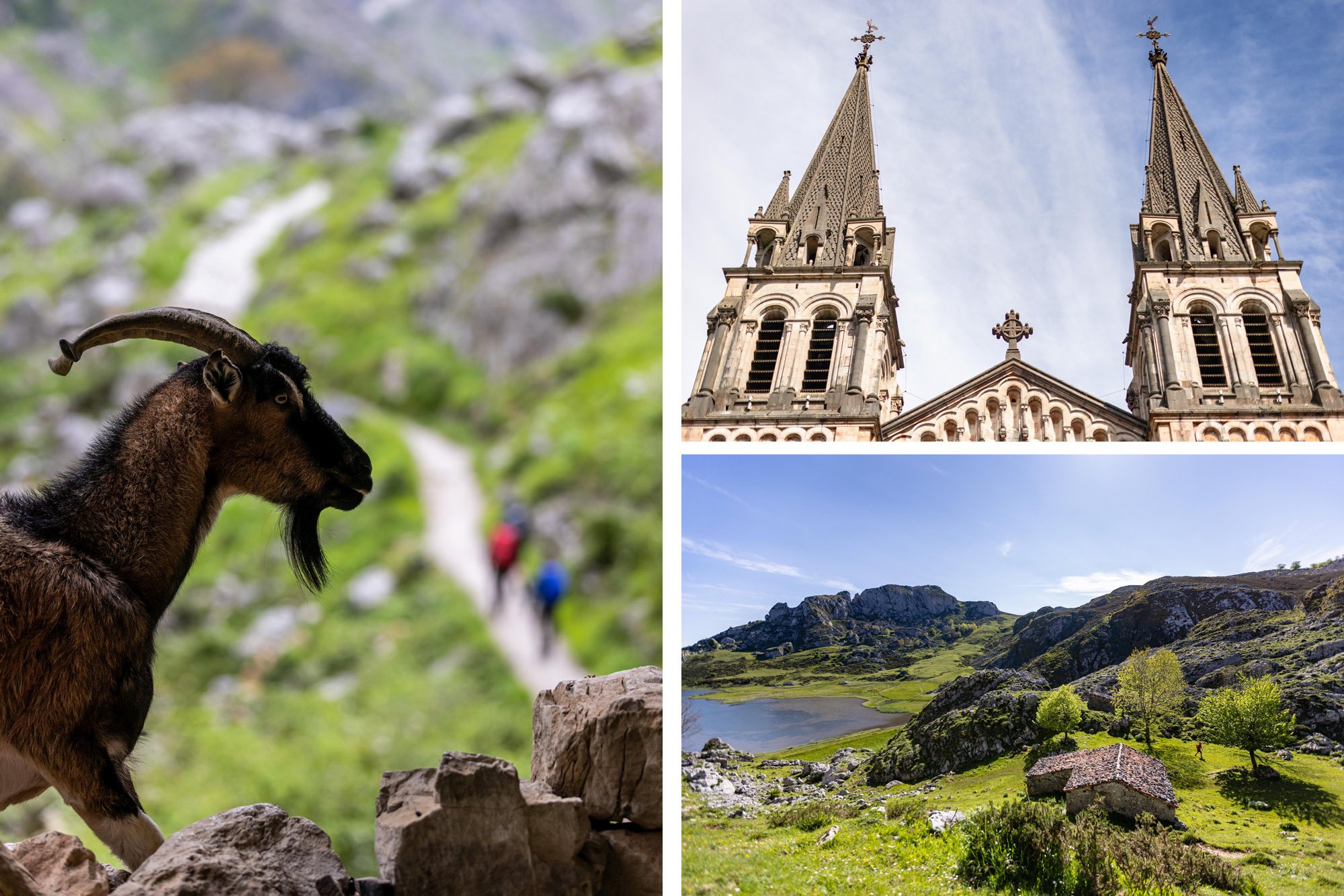
The ‘drop-off area’ here can be busy with tourists, but it’s rare they venture beyond the lakes.
Walk around and past Lake Ercina and you’ll find yourself on silent trails within minutes. A full day of hiking here will get you up to the roof of Asturias, passing meadows and forests of ash, beech on the way. Head up to the Marqués de Villaviciosa refuge for lunch and on to Vega de Ario, at 1630m. You’ll earn views of the Llambrión and Torre Cerrado massif. If the weather allows, you can even ascend the 1,935m Jultayu nearby. From Lake Enol, there is a terrific day hike out to the Ordiales Viewpoint, for superb vistas of the valleys of Angón, Amieva and Ponga.
The Picos are well set up for multi-day, hut-to-hut hiking - and such trips can start from here.
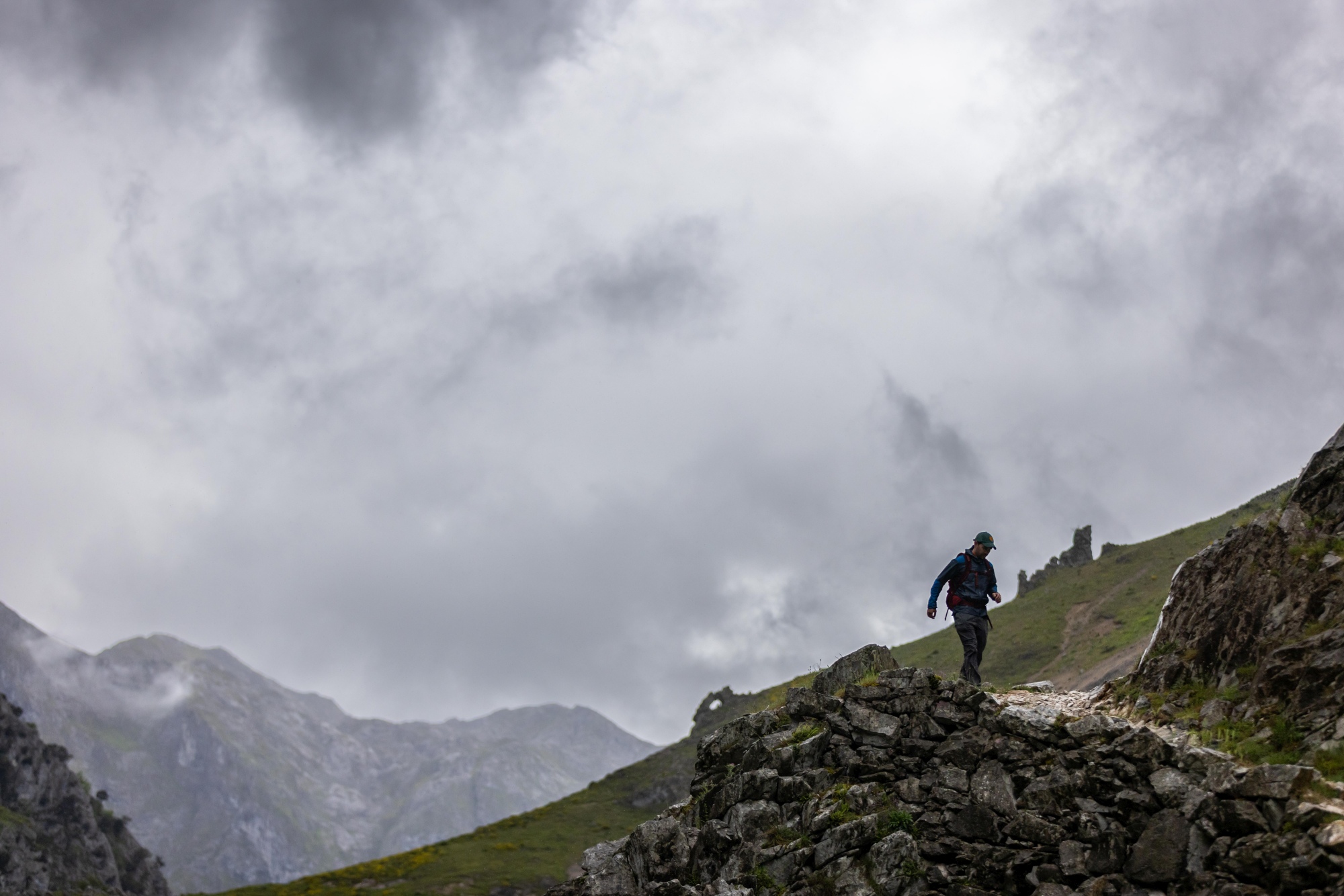
La Ruta del Cares
You feel the immensity of the mountains as soon as you arrive in Poncebos, the starting point for the Ruta del Cares. This is the most popular day hike in northern Spain. It’s a 6.8-mile through hike to Caín de Valdeón, a tiny village circled by mountains, and you have to either walk it both ways (making it a 13.6-mile day), or have a pick up arranged at the other side.
The walk begins a couple of hundred metres above sea level in Poncebos, with the 1,339 peak of Ariscu Sonllanu dominating the view behind and blocking you off from the coast.
From here, the Ruta follows the Cares River into the eponymous Cares gorge. As you ascend, high limestone mountains with huge prominence dominate the scene. You’ll hit a path which hugs the wall of the Cares gorge and guides you all the way to Caín. It drops steeply down to the river on one side, and always looks onto rugged mountains. The Ruta del Cares is popular for good reason, and given that fact, it is tough to get the route to yourself. The same cannot be said of the surrounding areas, though - despite the fact that they are equally as dramatic.
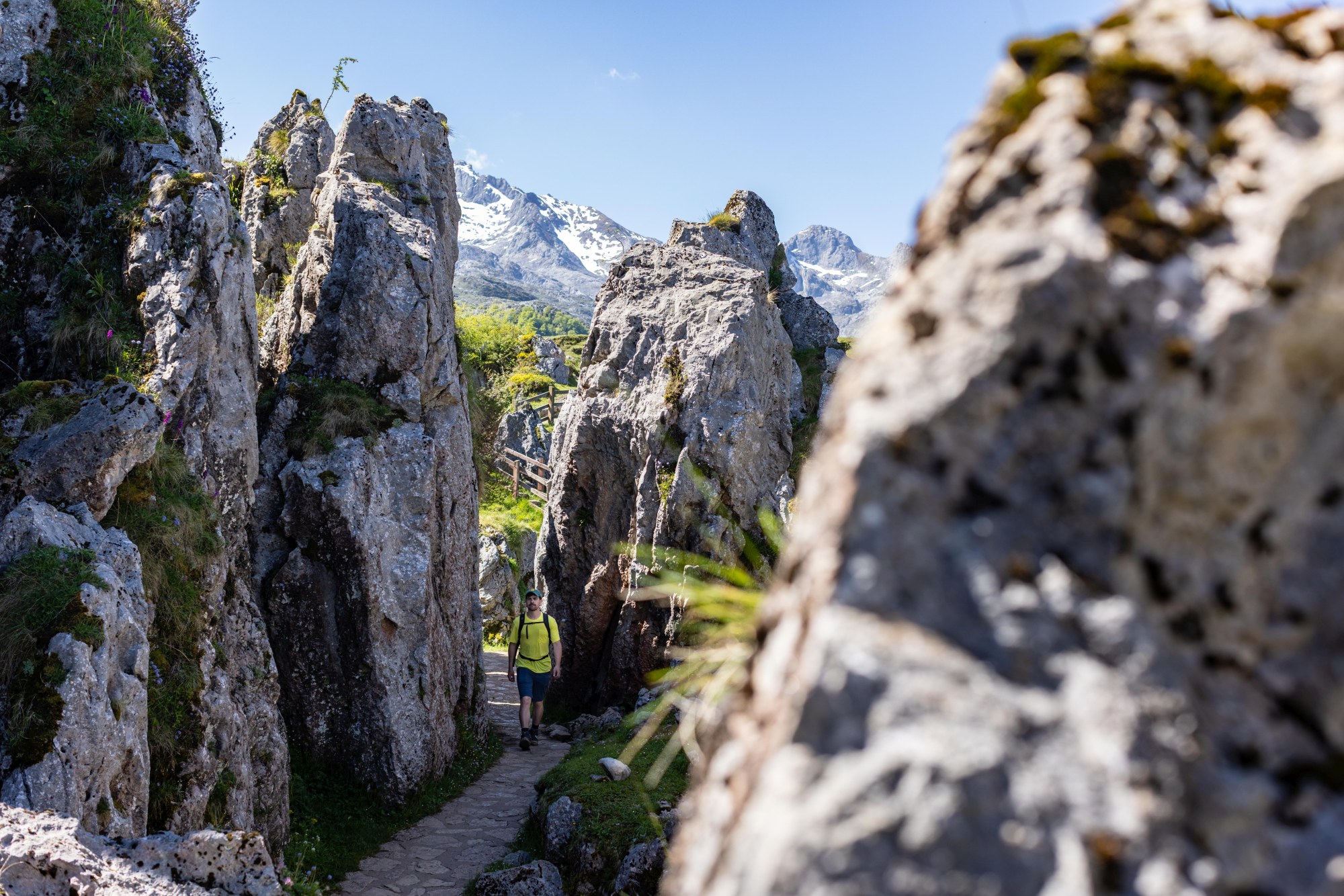
For a quieter day out in similar terrain, turn left from the starting point of the Ruta and walk up to Bulnes on a serpentine path carved between two enormous walls of rock. Bulnes is a tiny town which was once only reachable on this path, but that changed when a funicular was installed elsewhere. The result is that this hardy walk now doesn’t see much footfall. There are excellent mountain views from Bulnes, which is also a popular base for climbers heading on to tackle Urriellu Peak (Naranjo de Bulnes), the area’s most iconic mountaineering feat.
Sotres, a town high above Poncebos, at 1,050m is another fantastic starting point for hiking, and is a heartland for the local Gamonéu and Cabrales PDO cheese. For a longer outing, the La Ruta de la Reconquista a Cuadonga is a three-day, little-known hike through this landscape, running from Sotres to Poncebos, on to Vega de Comeya and finishing in Covadonga. It shows off the wild landscape of the mountains, lakes and dramatic gorges, without the crowds.
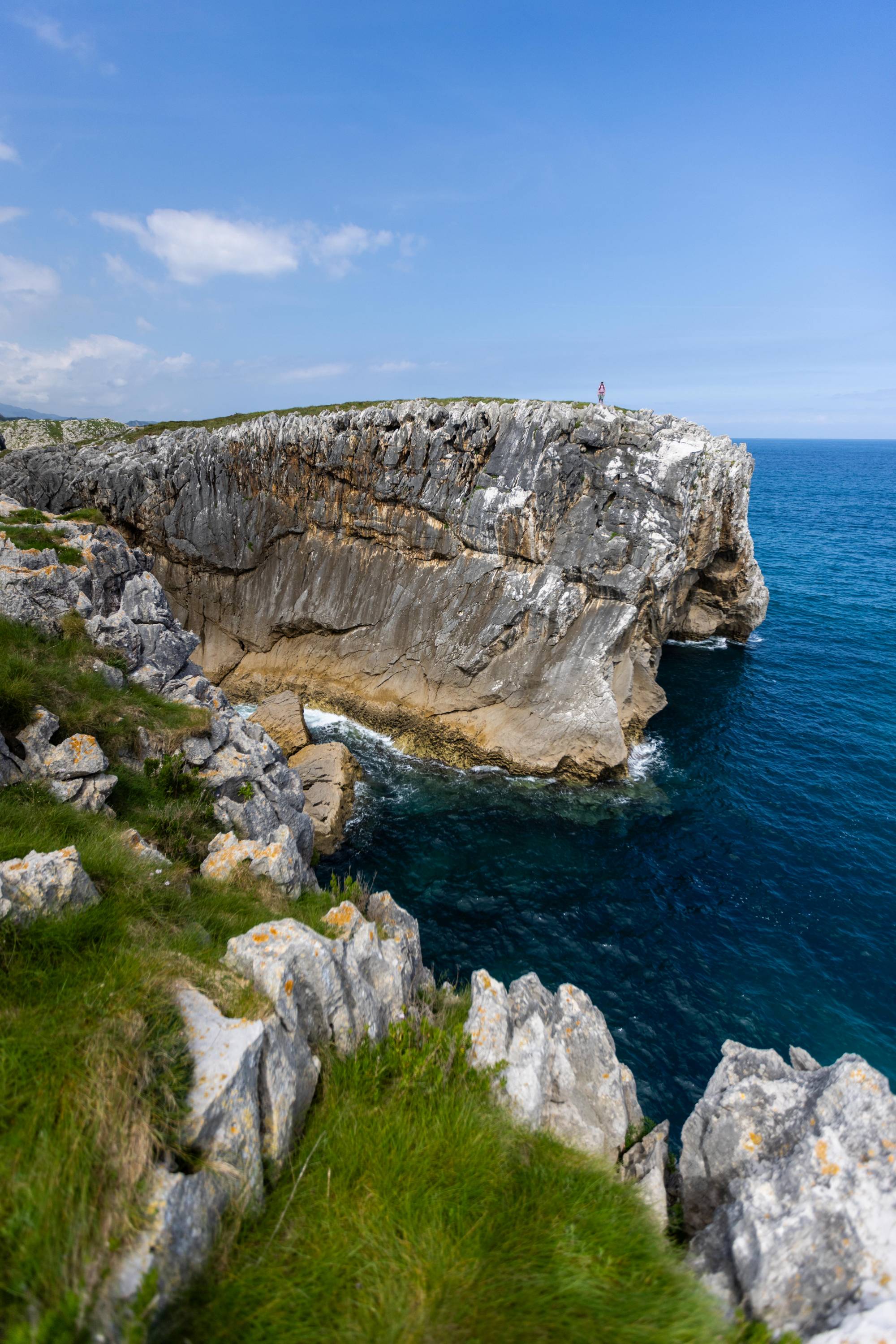
Camino del Norte
One legendary route dominates the psyche back down by the coast: the Camino de Santiago.
The ‘Camino del Norte’ variant of this iconic pilgrimage route follows the coast of northern Spain through Asturias, and you can tell when you’ve stumbled upon it once you start passing an abundance of walkers with hiking poles, maps, backpacks and cameras. The yellow seashell waymarkers on a blue backdrop, known around the world, are there to guide your way.
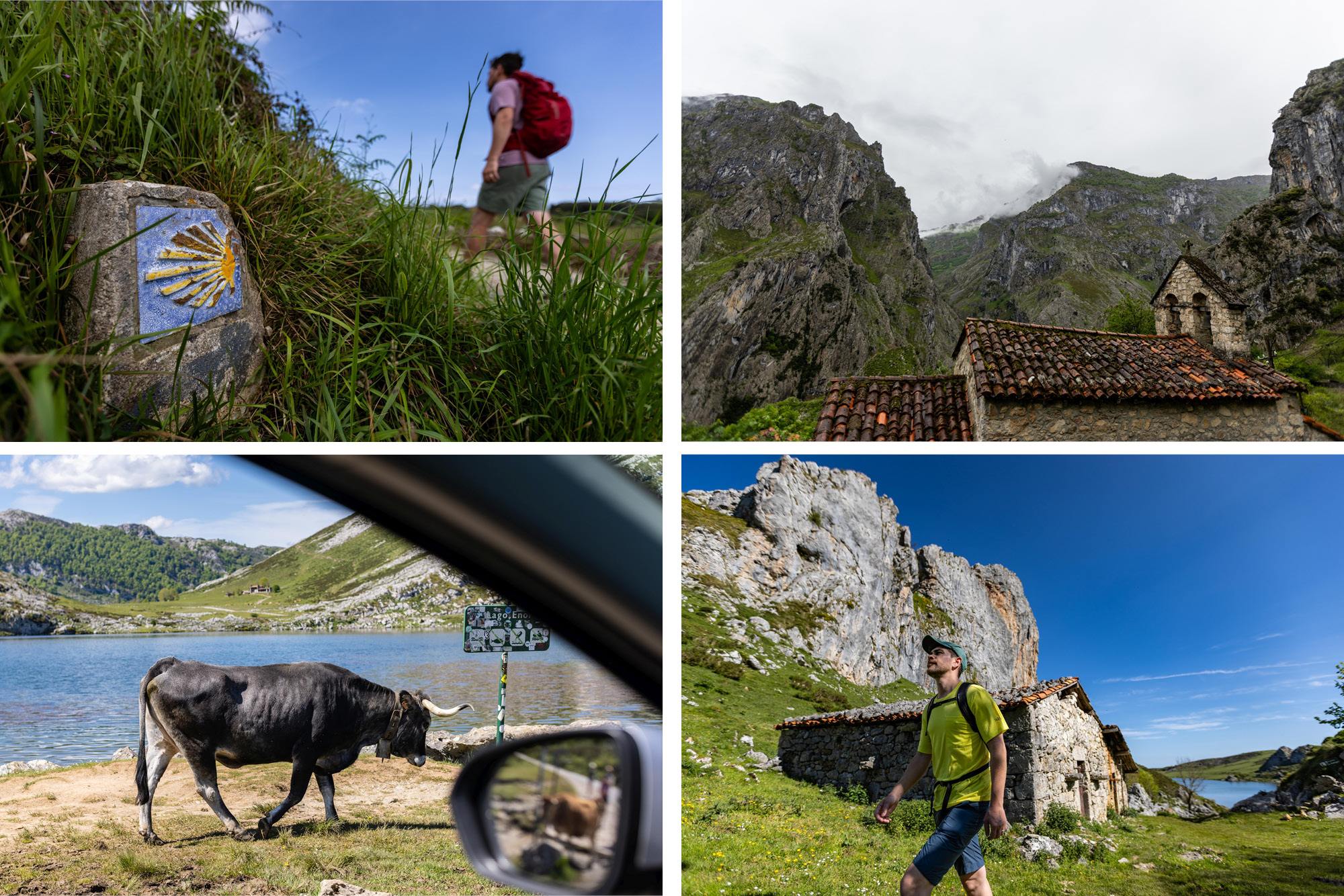
Sample a section of the Camino along the coastline and keep your eyes open for beaked or pilot whales, and dolphins in the Bay of Biscay.
Don’t leave the coastline without visiting Guadamía, a small area on the eastern coast of Asturias, near the larger town of Ribadesella. It’s a site where wide grassland plains sit on the edge of huge cliffs dotted with caves and curious pinnacles. It’s a fascinating example of an otherworldly karstic landscape - and there are some golden beaches dotted in between.
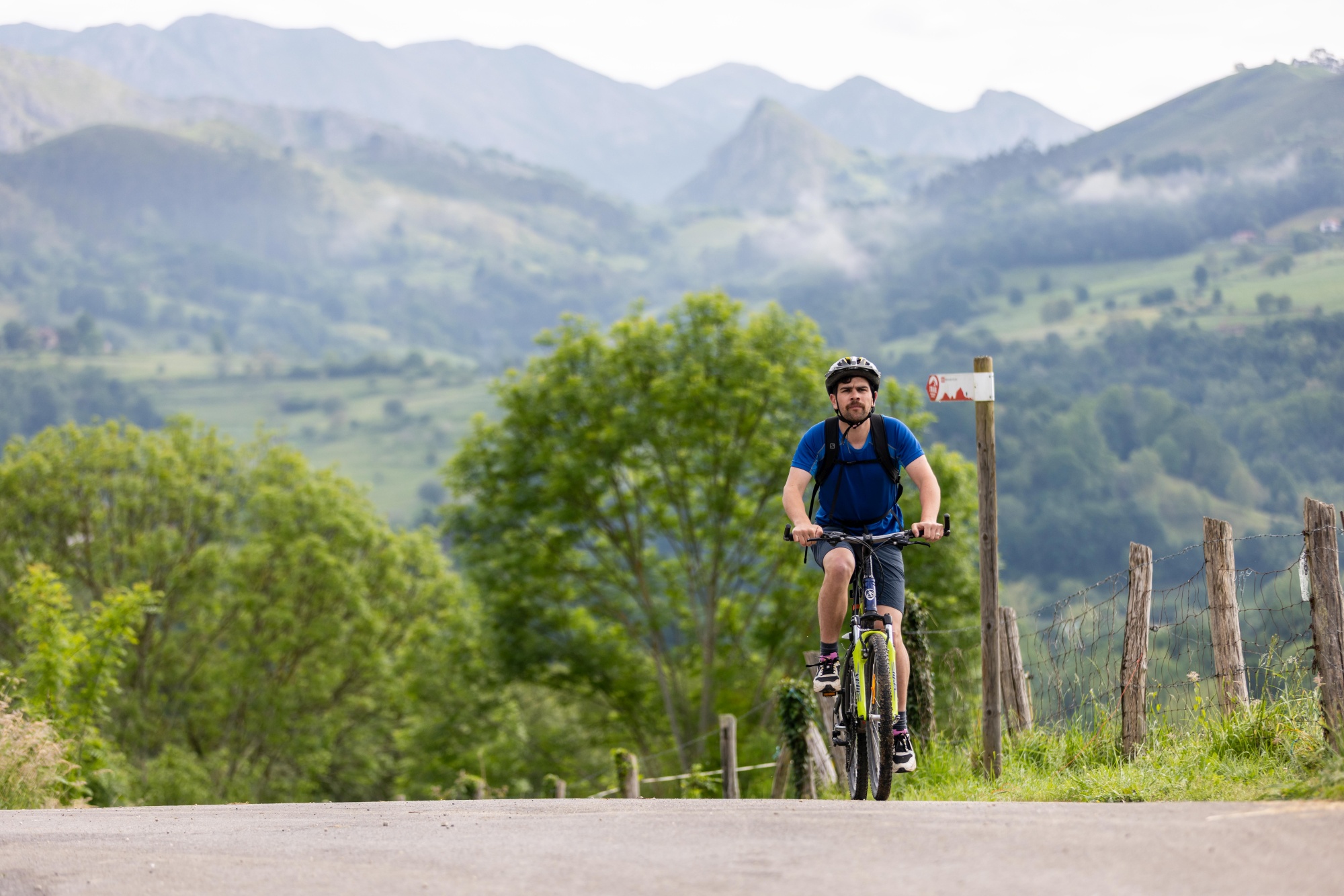
In the Saddle
It’s in the rolling foothills between summit and sea that you’ll find the best of the gravel riding.
A tour of Sariego from the village of Vega mixes road and gravel, reaching the summit of La Fumarea at 600m and joining a track between the municipalities of Sariego and Villaviciosa. The views are far-reaching lush greenery, out over the forests, agricultural terraces and the Picos which backdrop it all. This is typical of gravel in the area, so you won’t be short of stuff to ride.
Mountain bikers should head to Lavinia for a tough 16km, circular flow trail. The ascent is a demanding one, but the reward is a 3.5km descent complete with jumps and speedy berms.
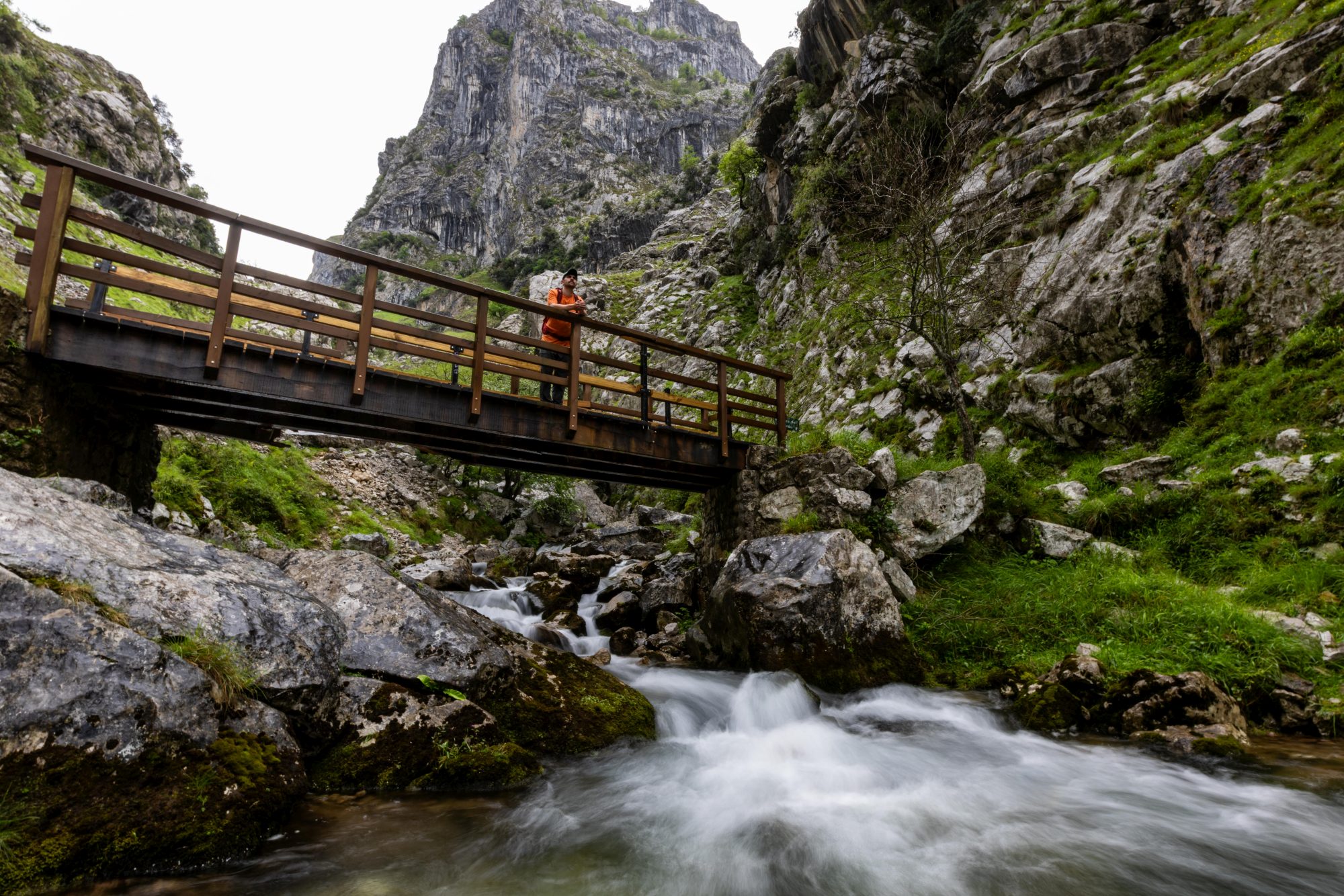
On the water
Canoeing and kayaking are immensely popular here in Asturias. As you follow the River Sella into the mountains, you’ll pass hundreds of canoes at the side of the route - and a similar number moving along the water. The Sella - which is also a key river for salmon fishing - is home to the biggest canoe race in the world, El Descenso del Sella, with over 2,000 participants joining the 20km dash each August from Arriondas to Ribadesella (and the party afterwards).
Every other weekend in the calendar, the Sella Descent is a fine, relaxing paddle, with plenty of rock pools where you can stop and nip down for a swim. The Eo, Nalon and Narcea rivers also lend themselves well to paddling, and there’s an abundance of canyoning to be done in-land.
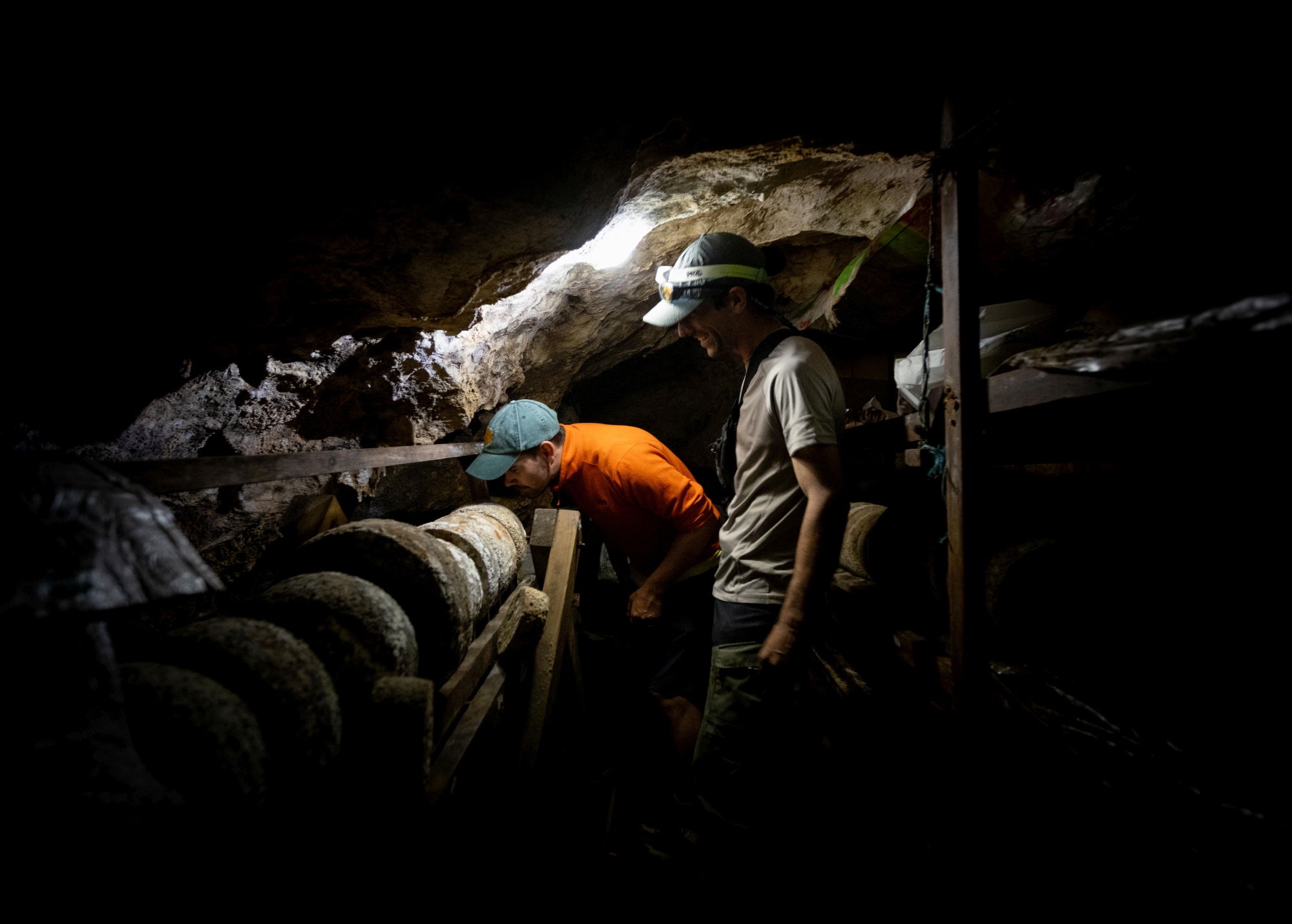
The caves below
The karst landscape of Asturias has made it a global epicentre of speleology and spelunking, which for those not in the know, is the comically clunky word for the exploration of a cave.
There are five caves in the region that are UNESCO protected - this being for the primitive art scrawled on the walls inside - and some of the deepest caves in the world can also be found in the region. The Torca del Cerro del Cuevón drops a remarkable 1,589m below sea level.
All of this means that if you don’t get claustrophobic, there are whole networks of caves you can explore here; including rare point-to-point caving expeditions over 10km in length.
If you don’t encounter the caves of Asturias on foot, you likely will on your plate. This region is renowned for its cabrales cheese, wheels of deep, creamy blue that are matured in secret caves dotted around the region for anywhere from two months to over a year. The cheese is placed on wooden shelves called talameras, with the idea being that the maturation intensified the flavour.

Sidra de Asturias
Sidra is more than a drink in Asturias - it’s the local culture. Sidrerías are dotted around the region, panelled with old wood, with huge barrels of the drink lined along the walls. Asturian cider is made from local apples then fermented in chestnut barrels, but it’s the way that it’s poured which draws attention. Escanciadors (cider pourers) hold a slightly-tilted glass low, in one hand, and the cider bottle high in their other. They then pour a small amount of sidra into the glass from a height - aerating it and enhancing the flavour. The best escanciadors don’t look at the glass as they pour - and the recipient of the drink is expected to see the sidra off quickly.
Stuart's trip was sponsored and supported by Turismo Asturias. Go to turismoasturias.es/en/ to start planning your active holiday in Asturias.

